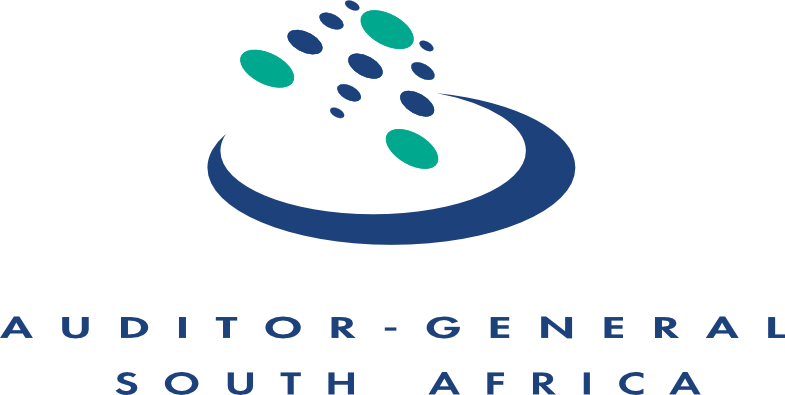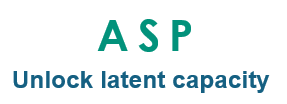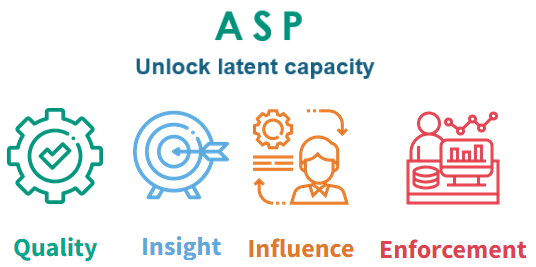Digital transformation
Our strategy, and specifically the efficiently strategic goal, calls for us to digitally transform and acquire technologies that markedly improve efficiencies and save on the cost and effort of doing our business. In response, we began upgrading our digital capabilities to realise efficiency gains in the short term, and to align the organisation to the needs and requirements of the present and the future. We have performed well in driving this digital transformation aspiration. The bigger picture in driving digital transformation was to improve our business and audit efficiencies in a sustainable and future-fit manner. In the financial year under review, we set a solid foundation for the rest of our long-term digital transformation journey.
In addition to continuing and expanding the work done thus far, we also ensured that everyone within the organisation is aligned and walking the journey together, which is key to the continued success of our digital transformation and bigger efficiency journey. Our leadership agreed that this means having a targeted and consistent change management process that will support high adoption and usage of our technological tools.
Digitally enhancing audit processes for greater efficiency and cost effectiveness
In just the few years since we began focusing on digitally-enabled audit it is heartening to see the programme’s immense progress. The audit software programme (ASP) is the result of our tireless work to re-platform our strategic business operations to meet the dynamic demands of the modern audit landscape.
The ASP, which aims to replace TeamMate as our core audit software, represents a pivotal movement for our organisation, embodying our commitment to staying at the forefront of industry trends and delivering unparalleled value to our auditees and stakeholders. It is more than just a technological upgrade; it is part of our bigger organisational focus on creating audit efficiencies and giving our audit teams the tools they require to continuously improve on their products.
The project is also testament to our adaptability in an ever-evolving business environment.
This is not the end of the journey, but the beginning of our innovation and digital transformation. We have ensured that we find suitable strategic partners to deliver on this journey. On the organisational front, we established a team of diverse experts to oversee the implementation of this incredible project.
The ASP consists of several projects, including:
We expect the ASP to greatly reduce manual audit processes, bringing enhanced efficiencies and productivity for the AGSA.
Considering the significant capital investment required for digital transformation capital projects aimed at achieving operational efficiencies, our priority must be to allocate the savings derived towards investing and raising capital.
We will annually request that Scoag approve our retention of the net surplus, in line with the PAA, for reinvestment in digital transformation capital projects. While our funding model has been financially sound in funding operations and minor capex projects in the past, it has been unable to fund major capex projects. Our proposal will address this challenge.
Building strong technological foundation through enterprise resource planning roadmap
Our internal processes are mostly manual, requiring extensive effort and resulting in data not being used effectively. We also have a challenge with our legacy enterprise resource planning system, due the system not lending itself to modernising our processes and not supporting the new ways of working. We recognised that to address these issues, there was a need for an integrated system to efficiently manage human capital, financial and procurement functions. We invested significant time and resources to understanding what good looks like (WGLL) when it comes to enterprise resource planning, before we embarked on this journey. The WGLL report recommended a sequenced approach that will focus on and prioritise key functions.
We developed a comprehensive business case and conceptual architecture for the enterprise resource planning project. This business case was thoroughly interrogated and approved by exco. In the coming financial years, we will implement the enterprise resource planning business case in a phased approach as per the approved roadmap. The phased approach will consider the investments made and the current work on the ASP.
Introducing culture of return on investment through benefits realisation
In 2023-24, we developed a benefits realisation framework for our strategic technological investments, which defines the benefits management processes, responsibilities and reporting guidelines. It will ensure that we assess all new projects for both qualitative and quantitative benefits to the organisation. We will continue to implement and closely monitor the framework to ensure that we successfully deliver sustainable results on this project.
Digitising organisational processes through intelligent automation
We have intentionally made an effort to digitise some manual processes to improve efficiencies in the organisation. This journey began by assessing internal processes. In 2023-24, we identified 10 processes that need to be implemented across the organisation. We were successful in implementing six robots and eight applications as part of the intelligent automation drive. The benefits of these automations will be realised from the 2024-25 financial year.
Sound management of capex budget
We paid close attention to the capex spending, given the need to drive digital transformation. However, technological advancement does not come cheap. Therefore, it was important to closely monitor capex to avoid any wastage of limited financial resources. We are proud to report that we did not exceed the planned capex spend for the financial year.
Availability and use of critical systems
During the year, we focused on the availability of critical systems. We surpassed our set target of 96% by achieving 99,05% on the availability of systems. This ensured that we had no significant
disruption of business operations. We have ensured that services provided by our strategic IT service providers and our own AGSA technology systems and applications consistently maintained high availability throughout the year, ensuring stable performance. We are continually monitoring challenges around PeopleSoft to ensure that there is no negative impact to business. The stop gap measure of upgrading the PeopleSoft platform (PeopleTools) is also in progress until we fully replace PeopleSoft in the future.
Continuous fight against cybercrimes
The world is witnessing a rise in cyber-related incidents. As IT improves and the reliance on technology increases, the frequency and severity of cyber-incidents escalate. The impact is felt by many organisations and the AGSA is not immune to the effects.
We have developed our information and cybersecurity plan based on adopting the ISO 27001 framework. The plan allows for continuous assessment and improvement of our overall security posture. Of the 24 initiatives planned for the year, 21 (87,5%) were achieved as per the approved plan. The remaining three initiatives are still in progress. We have also on-boarded a strategic partner for managed security services in our proactive fight against cyber-incidents.
Our employees have a critical role to play in protecting the organisation against possible attacks.
Therefore, we have proactively educated them on the importance of cybersecurity by hosting cybersecurity awareness webinars, placing physical awareness posters in our buildings, and sending regular awareness emails to staff. Lastly, the partner for an automated security awareness solution was approved and this tool will be rolled out in the 2024-25 financial year.
Conclusion
2023-24 saw us begin to make implementation progress on our major digital transformation initiatives. In addition to the ASP, we also began piloting some of our key digital transformation projects. These included Data Snipper and AGSA Kopano.
In 2024-25, the aim is to expand on these projects. We will also pilot the first part of our ASP with our audit business units and help our teams to feel the impact and benefit of the efficiencies that the programme has promised.
As we continue the journey of making our business processes more efficient by leveraging advanced technologies,we will also focus on implementing the following:
- Strengthening our cybersecurity processes and systems to protect ourselves from increasing cybercrimes.
- Continued implementation of our robotic process automation
- Enterprise architecture and plans in terms of the Control Objectives for Information and Related Technologies framework to improve our technological services.








